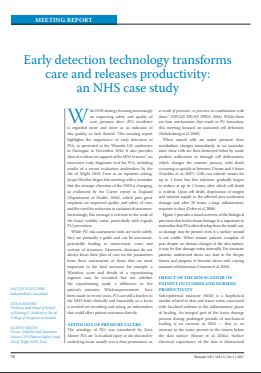With NHS strategy focusing increasingly on improving safety and quality of care, pressure ulcer (PU) incidence is regarded more and more as an indicator of this quality, or lack thereof. This meeting report highlights the importance of early detection of PUs, as presented at the Wounds UK conference in Harrogate in November 2016. It also provides clinical evidence in support of the SEM Scanner, an innovative early diagnostic tool for PUs, including results of a recent evaluation undertaken by the Isle of Wight NHS Trust in an inpatient setting. Jacqui Fletcher began this meeting with a reminder that the strategic direction of the NHS is changing, as evidenced by the Carter report in England (Department of Health, 2016), which puts great emphasis on improved quality and safety of care, and the need for reduction in variation of outcomes. Increasingly, this message is relevant to the work of the tissue viability nurse, particularly with regards PU prevention.





